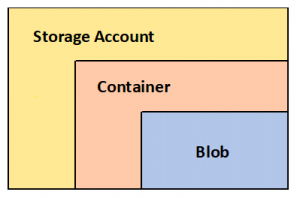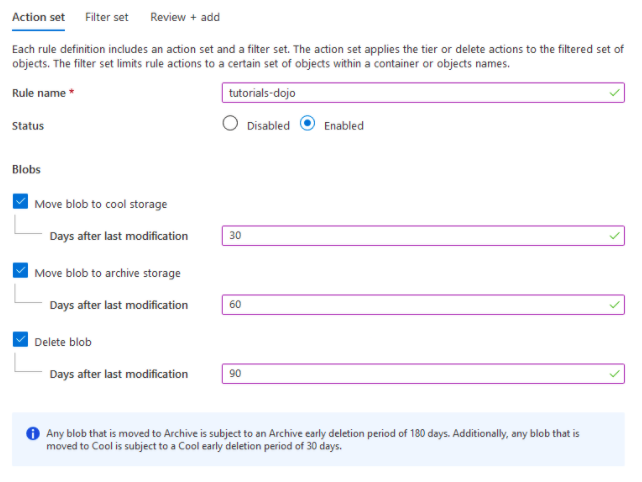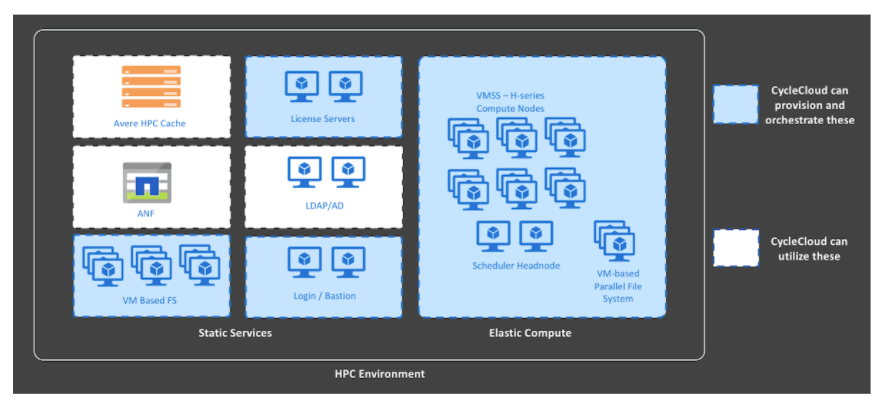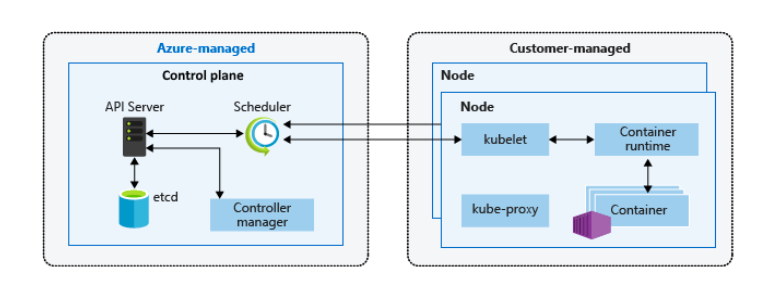- Binary Large Object
- Object storage solution for the cloud
- Stores all types of files: image, video, audio, log files backups, etc.

- Storage Account
- Unique namespace in Azure for your data
- If your storage account name is tutorialsdojo, then the default endpoint for Blob storage is: http://tutorialsdojo.blob.core.windows.net
- Container
- Organizes a set of blobs that are similar to a directory in a file system.
- Block
- Store binary and text data up to 4.7 TB.
- Preview larger block blobs up to 190.7 TiB
- Append
- Ideal for logging data from virtual machines
- Page
- Store random-access files up to 8 TB in size
- Store virtual hard drive (VHD) files
- Hot
- Frequently accessed objects
- Most cost-effective, while storage costs are higher
- Default in new Storage Accounts
- Cool
- Infrequently accessed data
- More cost-effective, but higher access cost than hot tier
- Data remains for at least 30 days
- Archive
- Rarely accessed files.
- Lowest cost for storing data but the highest access cost.
- Data remains for at least 180 days.
- Lifecycle Management Policy
- A lifecycle configuration has a set of rules that define actions that are applied to a group of objects.

- Enables you to transition your data to the appropriate access tiers.
- Delete blobs at the end of their lifecycles

- Versioning
- Identified by a version ID
- Enable versioning and restore an earlier version of a blob to recover your data.
- If you disable the versioning of the blob, it does not delete existing blobs, versions, or snapshots.
- Snapshots
- A read-only version of a blob that was taken at a given point in time.
- The snapshots persist until they are explicitly deleted.
- Object Replication
- Copies block blobs asynchronously between a source Storage account and a destination account.
- A source account can have up to two destination accounts. But there can be no more than two source accounts in the destination account.
- Static Website
- Serve your static website directly from a storage container named $web.
- CORS is not supported
- You can grant read-only access in your resources with public access level
- Enable Azure Content Delivery Network (CDN) to cache content from a static website
- You can use Azure CDN to configure a custom domain endpoint
- AzCopy
- AzCopy is a command-line utility that allows you to transfer blobs or files to or from a storage account.
- You can use Azure AD and SAS tokens to provide authorization credentials.
- These are the tasks that you can do using AzCopy:
- Upload files
- Download blobs and directories
- Copy blobs, directories, and containers between accounts.
- Synchronize local storage
- You can run AzCopy on Windows, Linux, and macOS.
- AzCopy method of authorization
- Blob storage – Azure Active Directory and Shared Access Signature
- File storage – Shared Access Signature only
- You can whitelist specific IP addresses or IP ranges to access your storage account.
- Private endpoints allow your storage account and virtual network to have a secure connection over a private link, eliminating exposure from the public internet.
- Azure Storage is using 256-bit AES encryption
- Customer-managed key
- Using Azure Key Vault, you can encrypt and decrypt data in Blob storage and in Azure Files.
- Customer-provided key
- A customer can include their own encryption key for granular control.
Key management parameter | Microsoft-managed keys | Customer-managed keys | Customer-provided keys |
Encryption/decryption operations | Azure | Azure | Azure |
Azure Storage services supported | All | Blob storage, Azure Files | Blob storage |
Key storage | Microsoft key store | Azure Key Vault | Customer’s own key store |
Key rotation responsibility | Microsoft | Customer | Customer |
Key control | Microsoft | Customer | Customer |


